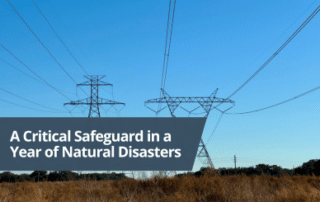Read the DITEK Blog for the Latest Information and Viewpoints
The DITEK Blog includes current information, opinions and suggestions for a wide variety of surge protection topics. Browse our blogs, and if you have an idea for a new topic that would push the industry further, please let us know!
Beware of Counterfeit Surge Protection Products – Avoiding Fake Products in the Online Shopping Season
It’s that time of year, everyone is online shopping for products across all industries. Truthfully, it’s not just this time of year though. In general, larger retailers have shown us how quick and convenient online shopping is. Add to that the allure of potential discounts, especially during this season, and clicking ‘Add to Cart’ seems like a no-brainer. Before you press that button though, a word of caution: there are many products out there that are not authentic, and it’s becoming increasingly apparent across surge protection manufacturers. Understanding the Risks Surge protectors are critical in safeguarding your electronic devices, appliances, and systems from damaging or destructive power surges and voltage spikes. Unfortunately, the market has seen a rise in counterfeit or subpar products that may seem fine on [...]
What Type of Surge Protector is Best for My Fire Alarm System?
Reliability is everything in the fire alarm industry. These systems are essential for safety in all types of buildings, which is why the 2023 National Electrical Code (NEC) mandates listed surge-protective devices (SPDs) for fire alarm systems. These guidelines ensure such critical systems remain operational when it matters most. It’s not a matter of “if” you need surge protection–you do. The real question is, “what type of surge protector is best for my fire alarm system?” Location is key It’s not at all uncommon for fire alarm panels and surge protectors to be tucked away in mechanical rooms or behind locked doors. But, you know what they say–out of sight, out of mind. When that’s the case, it’s easy to miss when a surge protector has reached its [...]
Mastering Surge Protection Installations – Understanding & Avoiding a Common Mistake: “Double Tapping”
Just because something is relatively common in practice, doesn’t mean it’s always correct. In fact, we’re seeing surge protection installations that aren’t just incorrect–they also go against the National Electrical Code (NEC) and can ultimately result in an electrical safety hazard. What’s the main issue? “Double tap” installations of line side Type 1 surge protective devices. We aren’t going to bury the lede on this one, so here’s a key takeaway for installers and integrators: a Type 1 surge protective device (SPD) doesn’t need to be installed on the line side of the main breaker, so avoid the issue entirely with an installation on the load side. If this suggestion seems surprising at all, you may have been “double tapping,” or you just want to be more informed [...]
In Their Own Words: Customers Share Their First Impressions of DITEK’s Newest Whole House Surge Protector
For just over 90 days, DITEK’s newest whole house surge protector has been on the market and in the field. Thousands of the DTK-120/240BK1 units have been distributed from DITEK’s manufacturing facility in that time, making their way to electrical panels everywhere. We decided to check-in with some of the first installers and distributors of DITEK surge protective devices to hear about their experience with the BK1 so far. This includes Frank Herod with Acree, Shantelle Wischnewsky with City Electric Supply, and Billy Harper with Empowered Electric. What has your experience or your customers’ experiences been like using the BK1? Frank: It’s been amazing. It’s sped up our install time, even with surface mount panels. We used to have customers complain about seeing the surge [protector], [...]
The Essentials of Summer: Sunscreen, Sunglasses … and Surge Protection?
Summer’s here! You’ve stocked up on sunscreen, sunglasses, and even a sun hat. But there’s one s-item you probably haven’t thought about—yet. Surge protection. That’s right. It’s not just for lightning storms anymore. And it might just save your summer comfort (and wallet). If you’re looking to enjoy summer, be sure surge protection is on your summer essential list. Why? Because in the summer heat, no one wants to go without air conditioning, and the one thing that protects your heating, ventilation, and air conditioning (HVAC) unit from damaging voltage bursts and power fluctuations is that final s-item: surge protection. Why Surge Protection? You may wonder, really? Surge protection? Is it necessary? The answer is “Yes! Now, more than ever.” Here’s why: we live in a time with [...]
Does Your Fire Alarm Meet the New Code 2023 NEC Requirements?
Surge Protection Now Mandatory for Fire Alarm Systems Fire alarms are an essential safety feature in any building, alerting occupants to the presence of smoke or fire, of course. But an alarm system can only protect you if it’s working properly. Did you know that your fire alarm system could silently fail due to an electrical surge? Power fluctuations—often undetected—can damage fire alarm components, rendering them useless when you need them the most. That’s why the 2023 National Electrical Code (NEC) now mandates listed surge-protective devices (SPDs) for fire alarm systems to ensure they remain operational. Why Surge Protection Matters for Fire Alarm Systems Electrical surges happen more often than you think. Whether caused by lightning strikes, utility grid fluctuations, or internal electrical issues, these surges can severely [...]
Why You Need Surge Protection: A Critical Safeguard in a Year of Natural Disasters
2024 has been a year of unprecedented natural disasters, with storms, hurricanes, floods, tornadoes, and wildfires wreaking havoc across the United States. According to the National Oceanic and Atmospheric Administration (NOAA), the country endured two dozen separate billion-dollar weather and climate disasters, with the financial toll of these 24 events exceeding $100 billion. Alongside visible destruction, these disasters bring hidden dangers that many homeowners overlook: damage to the electrical grid and fluctuations in power quality. These powerful weather events reaffirm that one critical safeguard every household and business should consider is surge protection. The Growing Threat of Power Surges Power surges are sudden spikes in electrical voltage that damage electronics and appliances. According to the National Fire Protection Association (NFPA), electrical malfunctions are one of the leading causes [...]
Why Surge Protection is a “Must” Investment for Electric Vehicle Owners
So, you made the leap! You thought about this for a long time. You debated the pros and cons, and then, you finally invested in an electric vehicle. Now, as you drive home from work each day, you smile as you drive past that line of cars at the gas station, knowing your vehicle will plug in, charge at home, and be ready for the commute tomorrow. You’re feeling good about your EV and yourself. Buying the EV was a debate in your household because it was a huge investment—way more than that big-screen TV you bought last year. But now that you’ve made the purchase, you look at it and admire the vehicle’s lines and its color. It sure looks sharp! As you consider all the things [...]









